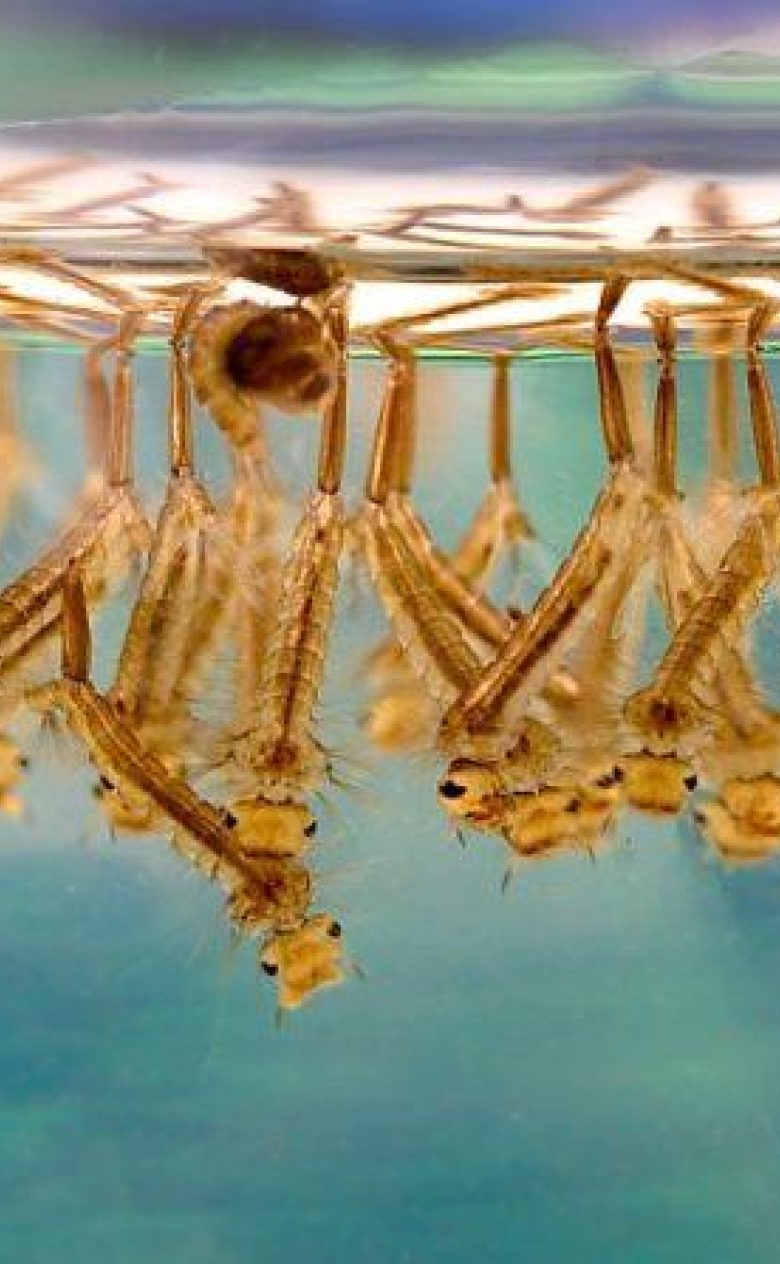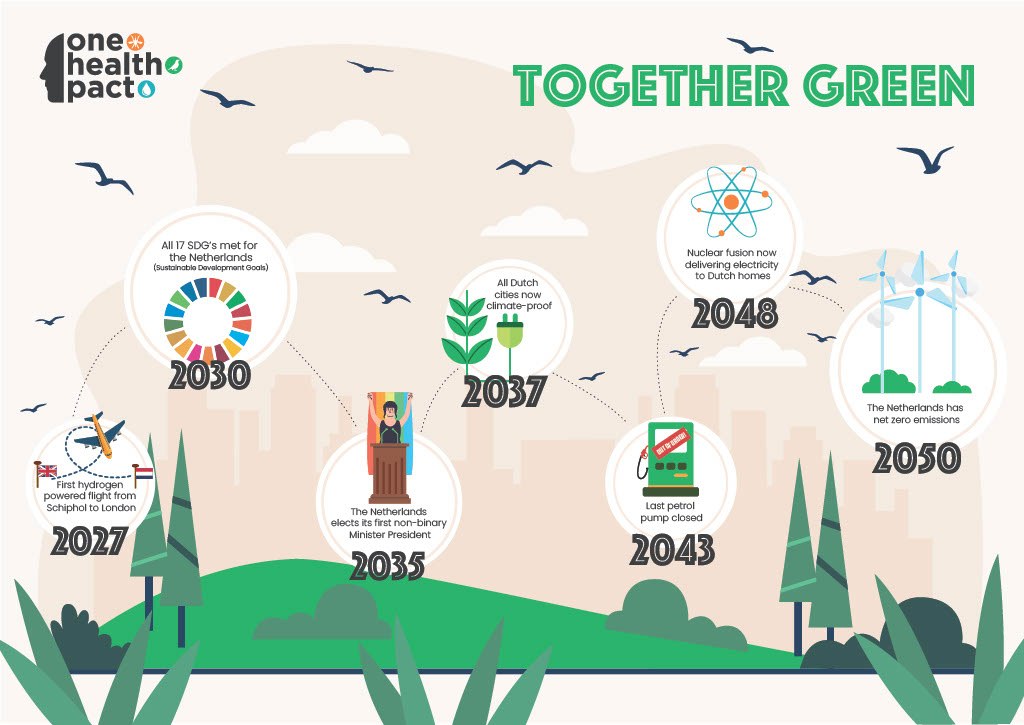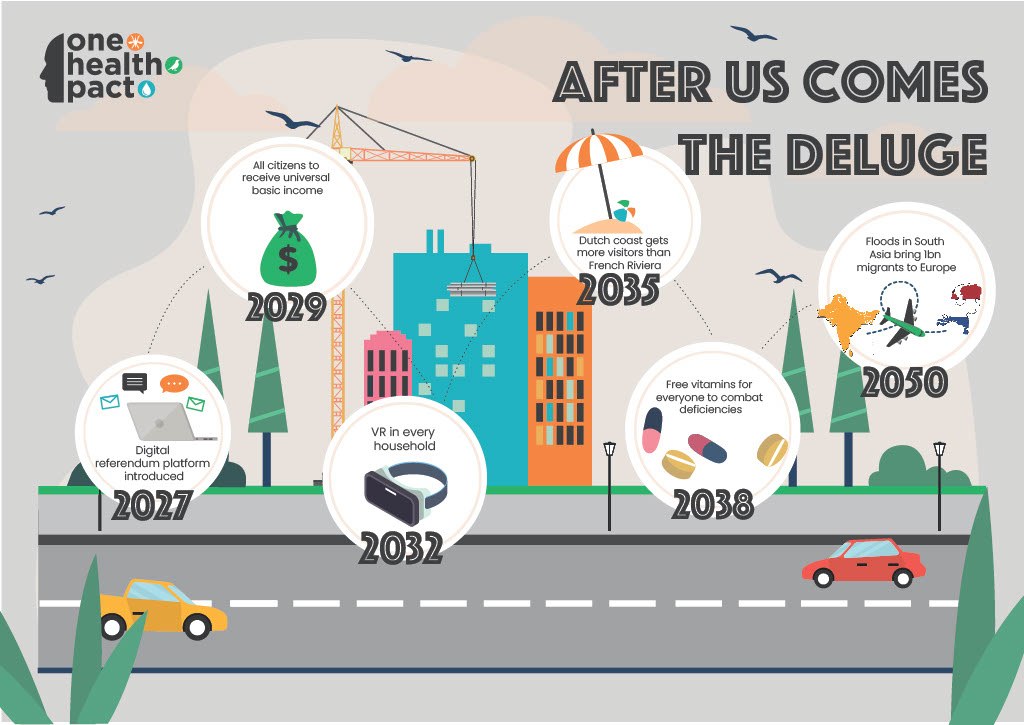How will our health change in the future? Creating knowledge-based scenarios
Our world is changing in terms of both climate and socio-economics. These changes could have a profound impact on the health of humans, animals and the environment, which in combination is often referred to as ‘One Health’. The recent paper ‘Creating the Dutch One Health Shared Socio-economic Pathways (SSPs)’ helps us to see where and when we should intervene.

Humans, animals, and the environment are closely interlinked and identifying realistic future vulnerabilities requires a holistic approach. We need comprehensive scenarios which cover a broad range of variables affecting One Health. Post-doc Martha Dellar, a freshwater & ecology expert at Deltares and a researcher at the University of Leiden, has developed a methodology for drafting national-level One Health scenarios based on the global Shared Socio-economic Pathways (SSPs), and applied it to the Netherlands.
We needed input from many different areas of expertise
Dellar herself is particularly interested in mosquito populations, how they might change in the future and how this affects disease risk. “To understand this better, we need to know how the Netherlands could change in terms of climate, demography, technology, and agriculture for instance. Many factors are uncertain”. That is why Dellar and her co-authors produced four specific scenarios to help understand the different dimensions of uncertainty and identify possible health risks.
Dellar: “I collaborated with other experts from the One Health Pact at Leiden University, Deltares, Wageningen University and the Royal Netherlands Meteorological Institute, the KNMI. But we also sought to obtain expertise from government and the private sector through workshops and surveys. Our scenarios needed input from people with many different areas of expertise”.
Combining all the input helped to create storylines for each of the four scenarios. Information was also incorporated from scenarios previously developed by the Netherlands Environment Assessment Agency (PBL) and Deltares. Existing plans and commitments were taken into consideration, as was their likely future under each scenario. Finally, the authors were able to produce detailed descriptions for each scenario through to 2050, including demographics, economics, technology, agriculture, lifestyles, health and more.

An outlook for any sort of health risk in the Netherlands
Dellar: “Other researchers can use the scenarios because our project was set up in a very broad, general way. The scenarios can be used to look, effectively, at any sort of health risk in the Netherlands. For example, in our project, we are particularly interested in mosquito-borne diseases, and Louie Krol of Leiden University has developed an elegant model for predicting mosquito populations in the Netherlands. We use the scenarios as input for predicting how those populations could change over time. Similarly, Mariken van de Wit at Wageningen University is looking at West Nile Virus and how the risk of outbreaks could develop in the future in each scenario”.
The paper that has just been published includes these descriptions. Because the scenarios cover the national level, they make it possible to consider the local context, policies, and customs and they should be a valuable tool for protecting One Health in the future.

Looking ahead: land use maps in our next paper
We went a step further and considered possible health risks under each scenario, such as new outbreaks of infectious diseases, pollution and flooding. We also have developed land use maps for each scenario that will be covered in our next paper. They show how land use in the Netherlands will change over the next thirty years, providing another level of detail to help modellers who want to use our scenarios.

